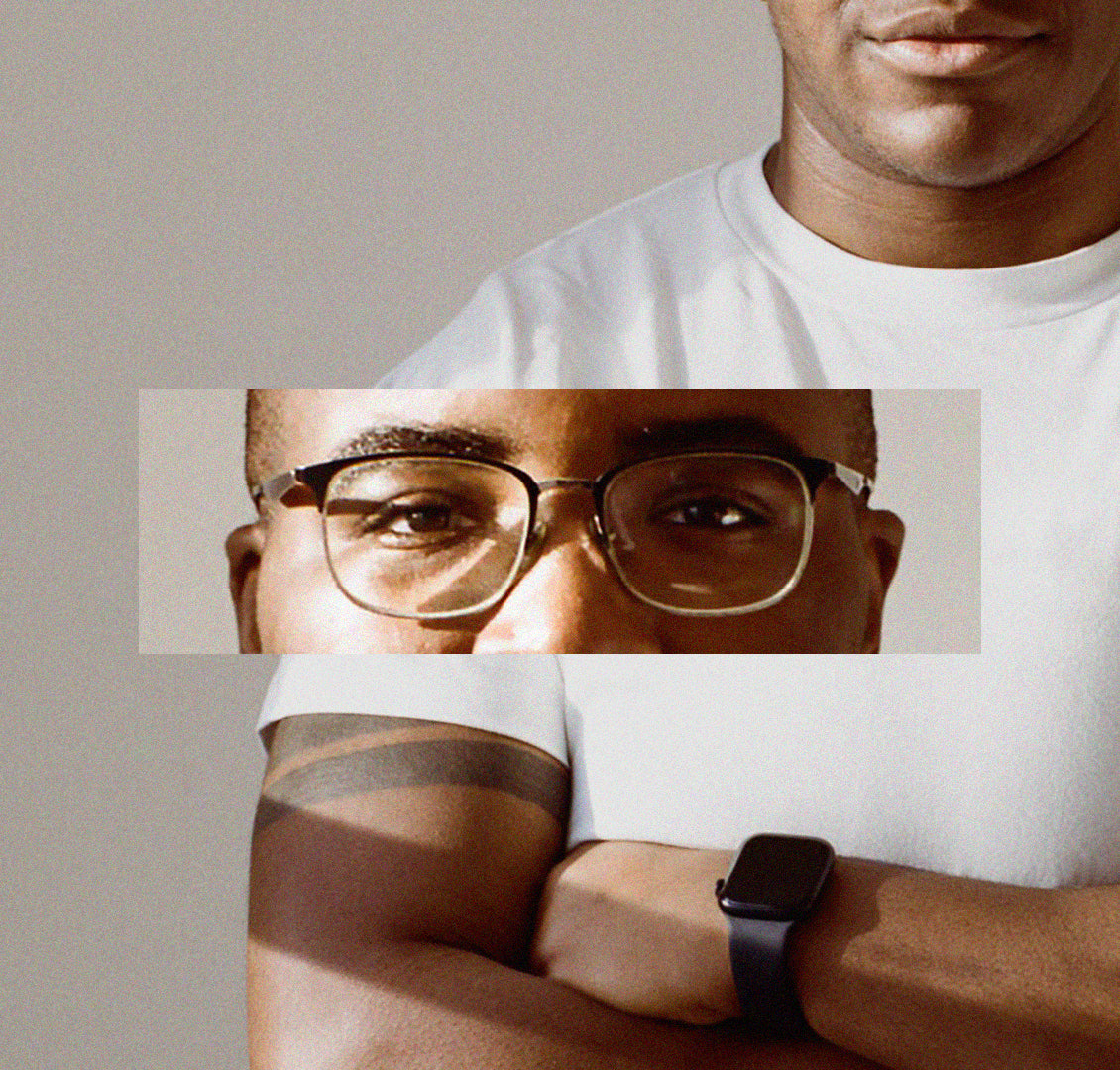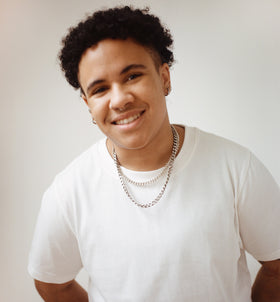
Nov 22, 2023
What is transmasc?
Finnegan Shepard Founder of Both&
Do you relate to any of the following experiences?
- You have a male best friend or a brother that you love, but you often get envious or resentful towards them. You love to wear their clothes, you find yourself admiring the shape of their body, that they can grow facial hair, or that their voice is or has dropped.
- When you are put into female groupings, whether that’s a friend group, a sports team, or for a dance, you feel intensely uncomfortable.
- When a stranger ‘accidentally’ calls you he/him or sir you get a flutter of excitement.
If you relate to any of these experiences, then it is possible that you fall within the umbrella term of transmasc. To be clear from the start, there are a lot of different identities and terms for gender identity today, including transmasc, trans man, non binary, enby, gender queer, gender non conforming, ftm, and others. This article isn’t prescriptive or trying to tell you who you are. Instead, we wrote it because when searching the internet during our own gender journeys, we found that a lot of the information out there was just that: information. It would define identities, but it wouldn’t help that much, because it didn’t hold emotional resonance.
Today, we want to share a few personal stories that illustrate different experiences under the umbrella of transmasc identity. Transmasc can be understood as a term that some people identify with specifically, but also as a general term with sub-identities beneath it, including trans man, enby, gender queer, and others.
We hope that through the storytelling you will be able to feel seen and reflected, and that it can give you some more clarity as you explore your own identity.

Jammison, 24, identifies as
trans man
The first spotlight is on Jammison (he/him), who lives in the USA, and who started medically transitioning when he was eighteen. Jammison grew up on the east coast, in a liberal family that was quite supportive of him and his identity. When Jammison was seven, he told his Mom that he was ‘secretly’ a boy. While his mother didn’t really have the language or background context to understand what that meant at the time, she was respectful of Jammison’s wishes around clothing and behavior.
Jammison describes his childhood as ‘pretty idyllic’, filled with sports, friends, and an easy time at school, where he naturally excelled. Middle school and high school were harder. When Jammison hit puberty, he felt incredibly disoriented in his body. He hated getting his period, and tried to hide his breasts beneath multiple layers of clothing and hunched shoulders. He spoke openly about his discomfort with his parents, and they ended up getting him a good therapist, who ultimately suggested they see a doctor regarding Jammison’s decisions around gender identity.
The process of going from therapy to the doctor and deciding on the right path wasn’t easy for the family, but all things considered, Jammison says now that he was “insanely lucky to have the family and the resources I came from.” When Jammison was fourteen he went on puberty blockers, and as soon as he turned eighteen he begane HRT (hormone replacement therapy) and got top surgery.
Jammison socially transitioned when he was fourteen, began to medically transition at eighteen, and transitioned legally at nineteen. He now lives in Michigan, and says that his identity as a trans man doesn’t play a big role in his life. His friends and family and partner know about his identity, but he isn’t out at work. “Not that I’m hiding anything,” he says, “just that it’s none of their business, and it’s nice to have spaces where being trans isn’t a part of the conversation.”
Atlas, 18, identifies as transmasc
Atlas (they/them) first discovered the term transmasc on Tumblr when they were in middle school. They come from a small town in the midwest, and didn’t know any other queer, non binary, or transmasc identified people growing up. They weren’t really sure what the family’s relationship to it was, either–it wasn’t something they ever talked about.
Around fifth or sixth grade, Atlas says they started spending a lot of time online, mostly on Tumblr, and then later Discord. In those spaces, they were able to find other people who identified as gender queer, and a “whole new world opened up.” Atlas says that suddenly “all these things that I thought were just me, that I was like a freak or something, were not a big deal at all. There were all these other people in the world who felt exactly the same way I did.”
Through middle school, Atlas identified as enby, though they ‘weren’t out’ at school or at home. Instead, they felt like they were only ‘their true self online,’ where they could use they/them pronouns, identify as non binary, and feel like they had a safe and understanding community.
Atlas had always dressed in boy’s clothing and been considered a tomboy in their town. In middle school and into high school, their mother, who had previously been okay with Atlas wearing boy’s clothes, started to put pressure on Atlas to wear girl’s clothes. She felt like what was okay as a little kid was starting to be not so normal in adolescence. This just perpetuated a feeling of shame and discomfort in Atlas, but they didn’t feel like they could tell their parents about identifying as non binary without it being a big deal, and they were afraid of being rejected.
In high school, things came to a head in a fight between Atlas and their mom one weekend, when Atlas expressed wanting to wear a suit to the school dance. Their mom said that wasn’t normal, and they told her that they didn’t identify as a girl, and that wearing a dress for them felt completely unnatural.
As Atlas put it, things didn’t get easy from there, but over the years his family came around to ‘sort of understanding.’ They got a binder in sophomore year of high school. By senior year, they identified as transmasc, not non binary. They still used they/them pronouns, and their family didn’t really understand what the distinction between non binary and transmasc was, but it didn’t really matter, because they had never really made the change to they/them pronouns anyways.
Atlas is now in their first year of college, and happily reports that they have found a great queer community on campus where they feel seen for exactly who they are.
Cacia, 27, identifies as enby
Cacia (she/they) grew up in the Bay area, with academic parents and plenty of exposure to queer culture. From a young age, they resisted categorization. This took many forms, some explicitly to do with gender, some not. In high school they identified as lesbian, and was constantly in relationships, much to their parents’ amusement.
In their early twenties, Cacia ended up in a long term relationship with a cis man, and for awhile presented in a more femme way. “I don’t look back on it thinking I betrayed myself or anything, and he definitely didn’t pressure me,” Cacia says now. “It was more like it was another character, another way of being in the world that I wanted to try out. It felt right for awhile, until it didn’t.”
During that phase, Cacia felt like she was read as queer in a ‘political sense,’ (she dyed her hair purple and was very much in the activist scene) but not in a way that directly touched on gender or sexuality. “That was kind of weird,” they say,. “It was like people were reading me as an ally. Which, there’s nothing wrong with, but also, that didn’t feel quite true.”
After that relationship ended, Cacia moved to Portland for a new job. “This is embarrassing,” they say, “but I became obsessed with this nonbinary person on IG. Everything about them. Their aesthetic, their vibe. I just really admired them, and the more I thought about it, the more I was like, ‘yeah, that’s how I feel, and that’s how I want to move through the world.’”
Cacia started openly identifying as enby, and using she/they pronouns. “Pronouns don’t really matter to me too much,” they say. “I know they are super important to other people and I’m not saying they aren’t important in general, just for me, that’s only a really small part of what gender identity is to me.”

So, Am I transmasc?
We hear this question all the time, and there’s no right or wrong answer. A really important thing to remember while exploring gender identity is that on the one hand, finding a category or a name for how you feel is extremely helpful, and can ease a sense of disorientation and lostness. But on the other hand, naming something by itself doesn’t ‘solve’ everything, and we often evolve in how we think about our identity or name it–in other words, getting too stuck on the language side of things can be a trap.
What we hope to do in this article, and in future story features, is to showcase a broad spectrum of experiences within the community. In doing so, we can push back against the limited narratives in mainstream media, and open up a space where the diversity of gender queer experiences is shared and celebrated. By engaging with each other’s stories, we can learn, find resonance, and also figure out the parts that don’t yet fit, or require more reflection.
If you would like to keep up with our story series, we recommend signing up for the newsletter. If you would like to be featured, shoot us an email!



